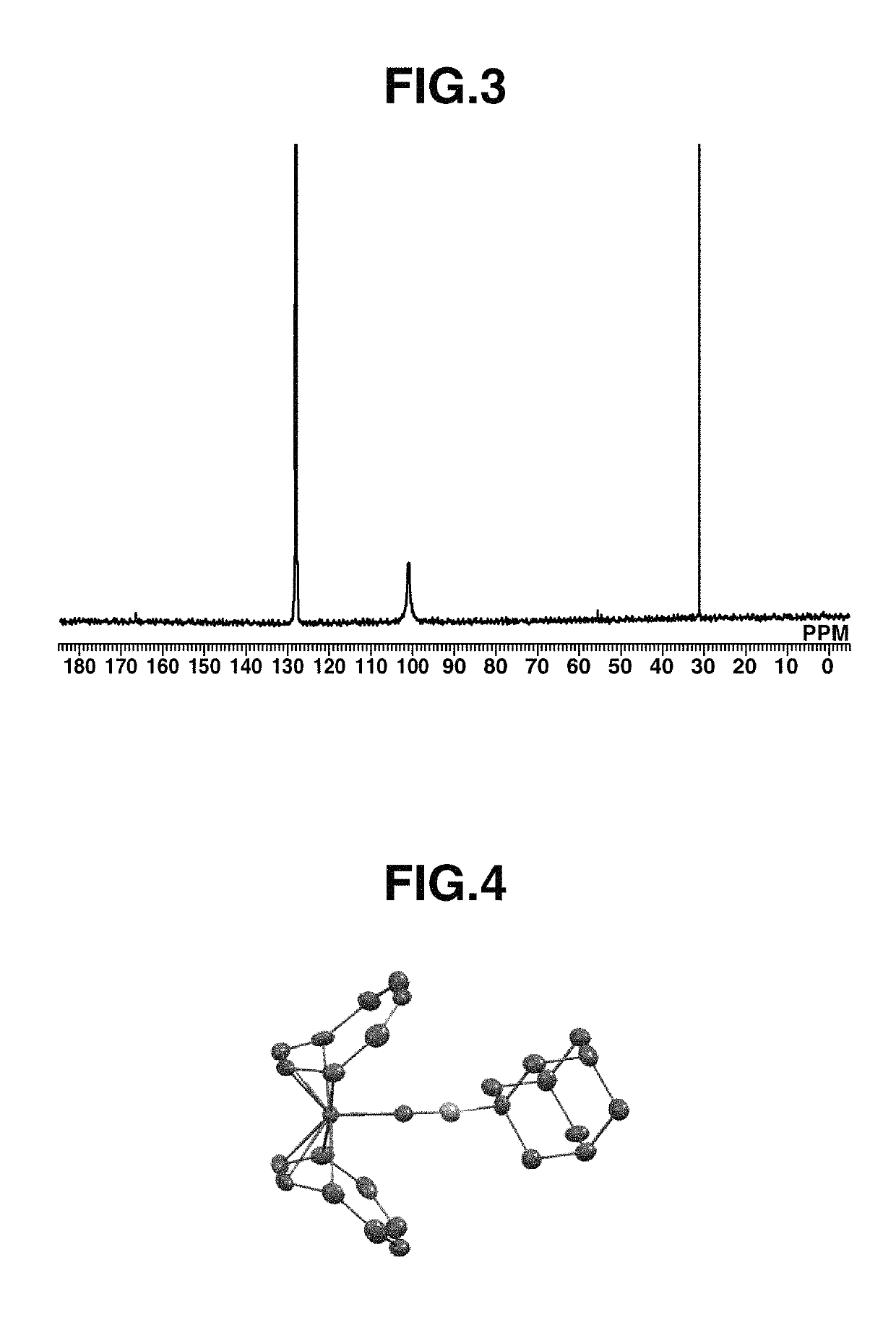Hydrosilylation iron catalyst
a technology of iron catalyst and iron oxide, which is applied in the direction of organic compound/hydride/coordination complex catalyst, physical/chemical process catalyst, iron organic compound, etc., can solve the problem of side reaction due to internal rearrangement of olefin, low selectivity of - and -adducts, and high cost of all center metals pt, pd and rh
- Summary
- Abstract
- Description
- Claims
- Application Information
AI Technical Summary
Benefits of technology
Problems solved by technology
Method used
Image
Examples
examples
[0205]Synthesis Examples, Examples and Comparative Examples are given below by way of illustration and not by way of limitation.
[0206]For the synthesis of metal complexes, all operations were carried out in nitrogen or argon atmosphere using the Schlenk tube technique or glove box. All solvents were deoxygenated and dehydrated by well-known methods before they were used in the preparation of metal compounds.
[0207]Hydrosilylation reaction and solvent purification of alkenes were always carried out in an inert gas atmosphere. The solvents and other ingredients were purified, dried and deoxygenated by well-known methods before they were used in various reactions.
[0208]Analyses of 1H and 13C-NMR spectroscopy were performed by JNM-ECA 600 and JNM-LA 400 of JEOL Ltd., IR spectroscopy by FT / IR-550 of JASCO Corp., elemental analysis by 2400II / CHN of Perkin Elmer, x-ray crystallography analysis by VariMax (MoK α-ray 0.71069 angstrom) of Rigaku Corp.
[0209]It is understood that hydrogen atoms ...
synthesis example 5
[Synthesis Example 5] Synthesis of Iron Complex A
[0225]A 20 mL Schlenk flask was charged with 17 mg (0.07 mmol) of Fe(COT)2, 12 mL of pentane, and 7 mg (0.08 mmol) of t-butyl isocyanide (abbreviated as tBuNC, hereinafter), followed by stirring at room temperature for 8 hours. Thereafter, the solution was filtered and the residue was recrystallized at −30° C., obtaining a black crystal (11 mg, yield 48%). The crystal was identified by x-ray crystallography analysis, elemental analysis and NMR spectroscopy. FIG. 1 shows the structure of the resulting Iron complex A, FIG. 2 shows the data of 1H-NMR spectroscopy, and FIG. 3 shows the data of 13C-NMR spectroscopy.
[0226]1H-NMR (600 MHz, C6D6) δ: 1.19 (s, 9H), 4.48 (br, 16H)
[0227]13C-NMR (151 MHz, C6D6) δ: 31.1, 55.6, 100.9 (br), 166.5
synthesis example 6
[Synthesis Example 6] Synthesis of Iron Complex B
[0228]A 20 mL Schlenk flask was charged with 50 mg (0.19 mmol) of Fe(COT)2, 2 mL of toluene, and 33 mg (0.21 mmol) of 1-isocyanoadamantane (abbreviated as AdNC, hereinafter), followed by stirring at room temperature for 1 hour. Thereafter, the solution was filtered. Pentane was added to the residue, which was recrystallized at −30° C., obtaining a black crystal (50 mg, yield 62%). The crystal was identified by x-ray crystallography analysis, elemental analysis and NMR spectroscopy. FIG. 4 shows the structure of the resulting Iron complex B, FIG. 5 shows the data of 1H-NMR spectroscopy, and FIG. 6 shows the data of 13C-NMR spectroscopy.
[0229]1H-NMR (600 MHz, C6D6) δ: 1.37 (br, 6H), 1.79 (s, 3H), 1.97 (s, 6H), 4.52 (br, 16H)
[0230]13C-NMR (151 MHz, C6D6) δ: 29.3, 35.8, 44.4, 55.7, 101.0 (br), 166.6
PUM
| Property | Measurement | Unit |
|---|---|---|
| temperature | aaaaa | aaaaa |
| temperature | aaaaa | aaaaa |
| temperature | aaaaa | aaaaa |
Abstract
Description
Claims
Application Information
 Login to View More
Login to View More - R&D
- Intellectual Property
- Life Sciences
- Materials
- Tech Scout
- Unparalleled Data Quality
- Higher Quality Content
- 60% Fewer Hallucinations
Browse by: Latest US Patents, China's latest patents, Technical Efficacy Thesaurus, Application Domain, Technology Topic, Popular Technical Reports.
© 2025 PatSnap. All rights reserved.Legal|Privacy policy|Modern Slavery Act Transparency Statement|Sitemap|About US| Contact US: help@patsnap.com



